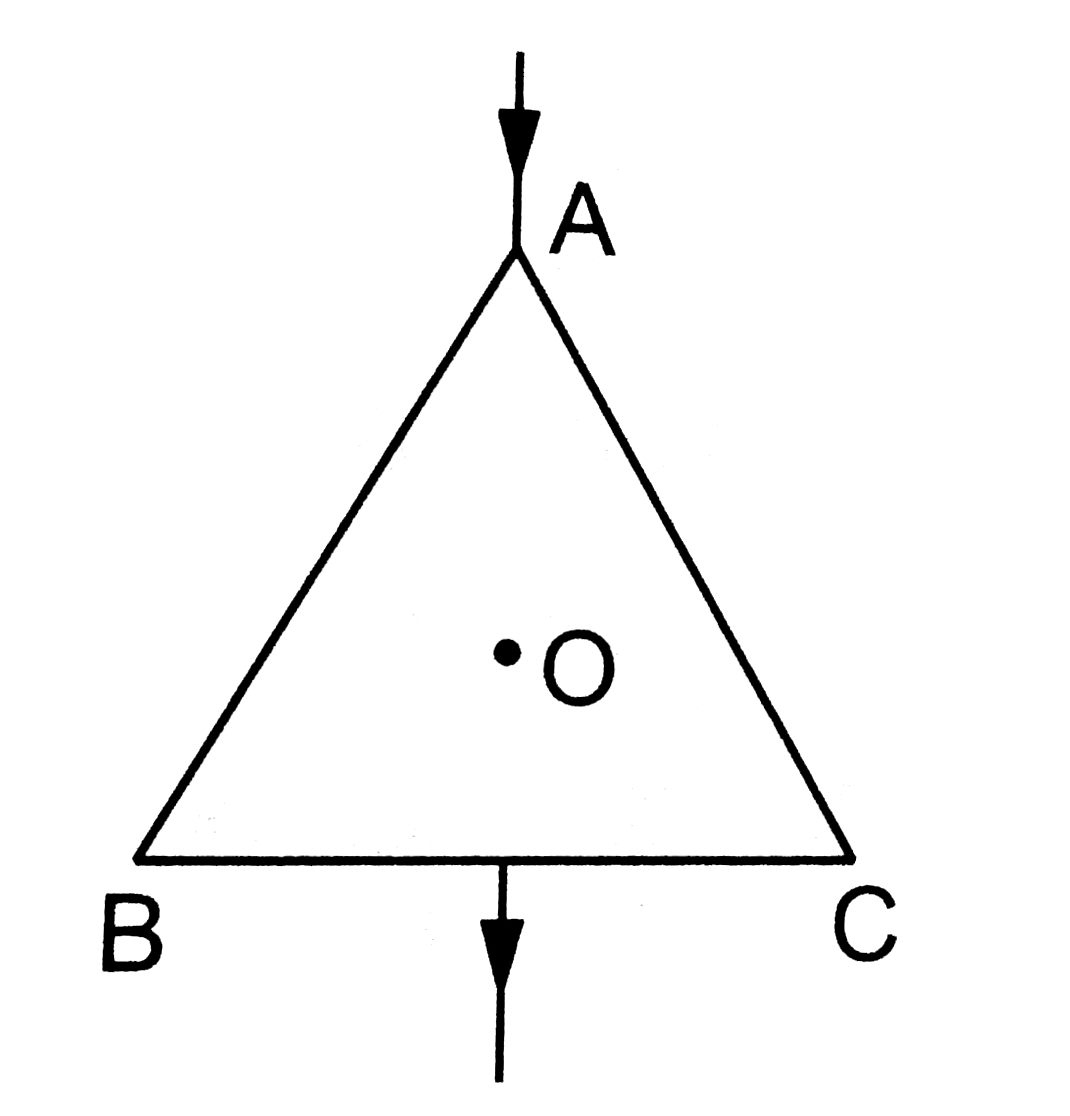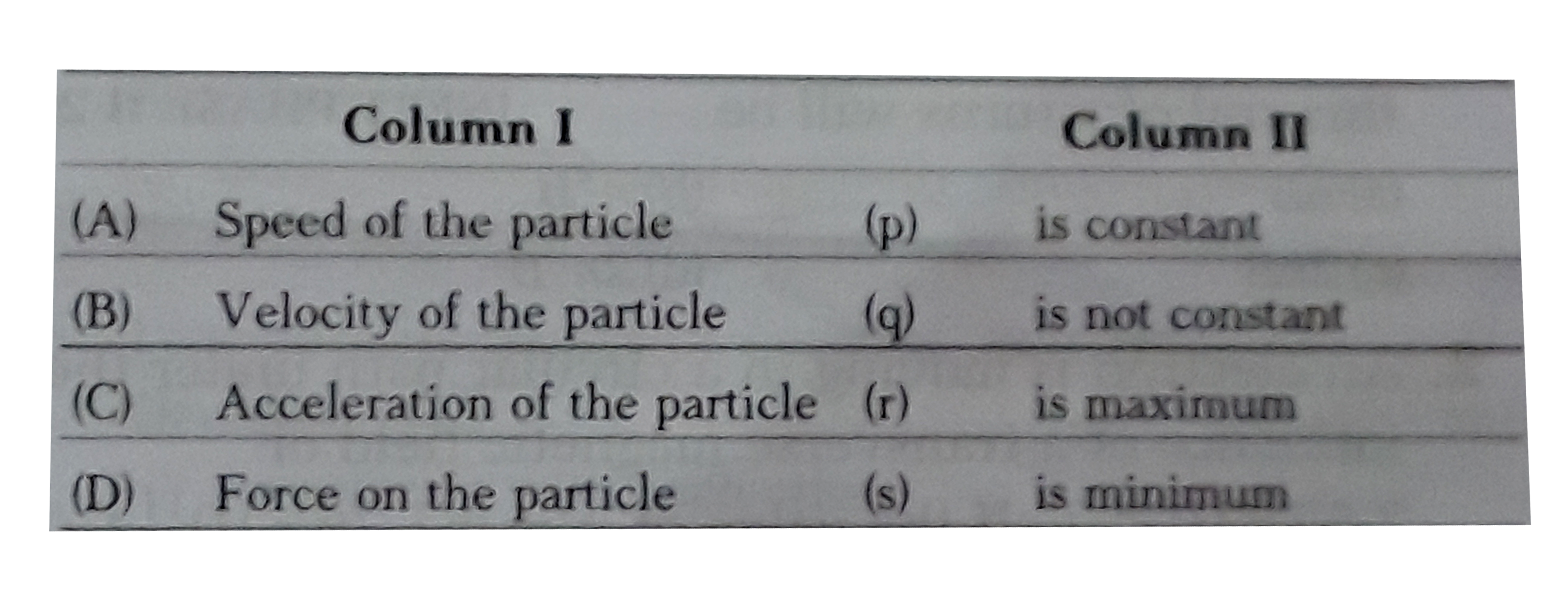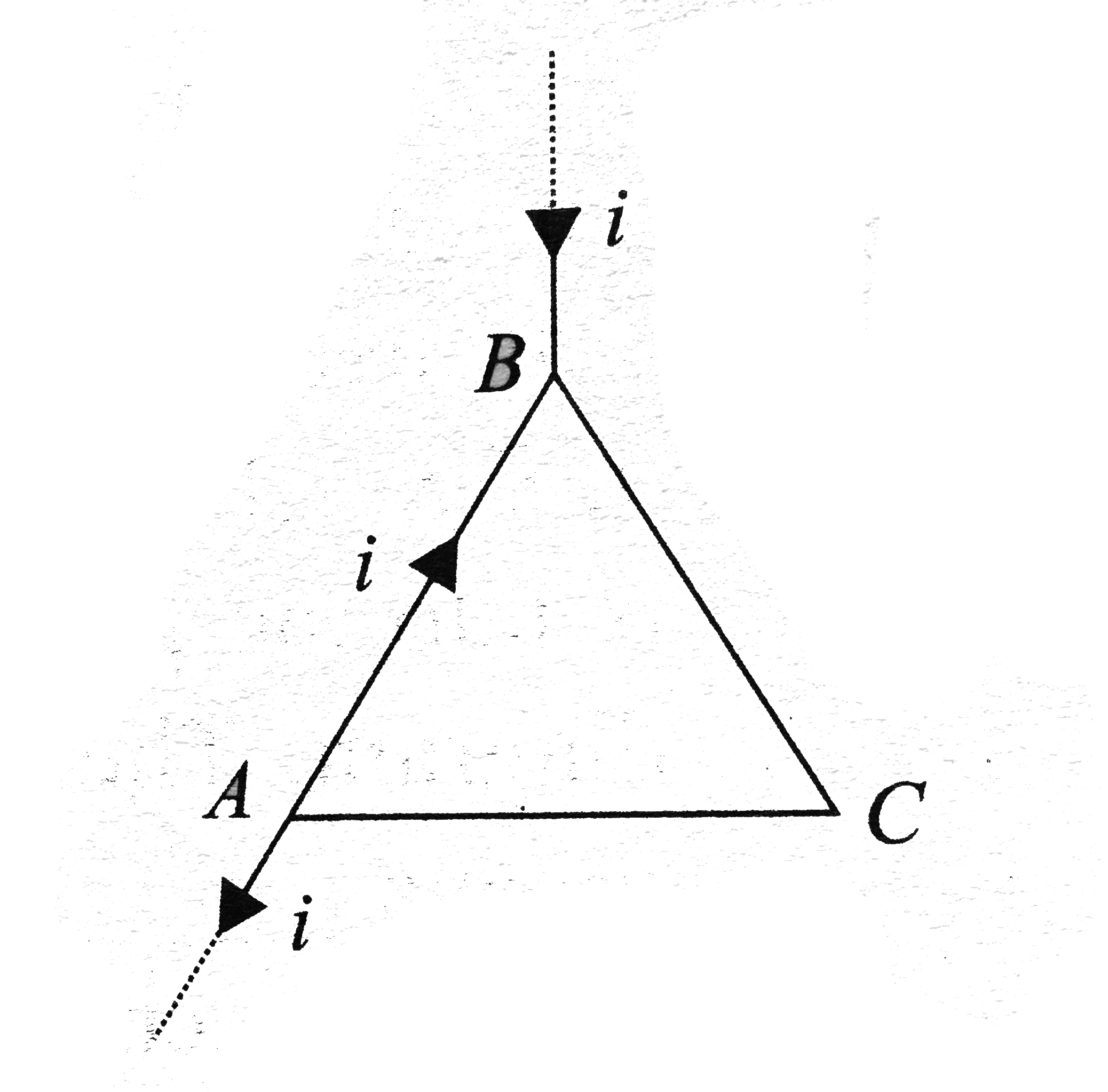A uniform magnetic field exist in a region which forms an equilateral triangle of side a. The magnetic field is perpendicular to the plane of the triangle . A charged q enters into this magnetic field perpendicular to a side with speed v. The charge enters from midpoint and leaves the field from midpoint of other side. Magnetic induction in the triangles is
mvqa
2mvqa
mv2qa
mv4qa
The correct Answer is:B
To solve the problem, we need to analyze the motion of a charged particle in a magnetic field within an equilateral triangle. Here’s a step-by-step breakdown of the solution:
Step 1: Understand the Geometry of the Problem
We have an equilateral triangle with side length a. A charged particle q enters the magnetic field from the midpoint of one side (let's call it side PQ) and exits from the midpoint of the opposite side (side QR). The magnetic field B is perpendicular to the plane of the triangle.
Hint: Visualize the triangle and mark the midpoints where the charge enters and exits.
Step 2: Determine the Radius of Circular Motion
Since the charge enters the magnetic field perpendicularly and follows a circular path, we can determine the radius R of the circular motion. The distance from the midpoint of side PQ to the midpoint of side QR is the height of the triangle. The height h of an equilateral triangle can be calculated as:
h=√32a
However, the radius R of the circular path taken by the charge is half the height, which is:
R=h2=√34a
Hint: Remember that the radius of the circular path is related to the geometry of the triangle.
Step 3: Apply the Lorentz Force
The force acting on the charged particle due to the magnetic field is given by the Lorentz force:
F=qvB
This force acts as the centripetal force required to keep the charge moving in a circular path:
F=mv2R
Hint: Identify the relationship between the Lorentz force and centripetal force.
Step 4: Equate the Forces
Setting the two expressions for force equal gives:
qvB=mv2R
From this, we can solve for the magnetic field B:
B=mvqR
Hint: Rearranging the equation helps isolate the variable of interest.
Step 5: Substitute the Radius
Now, substitute R=√34a into the equation for B:
B=mvq(√34a)=4mvq√3a
Hint: Ensure that you substitute the radius correctly to find the magnetic field.
Final Answer
Thus, the magnetic induction (magnetic field) in the triangle is:
B=4mvq√3a
We have an equilateral triangle with side length a. A charged particle q enters the magnetic field from the midpoint of one side (let's call it side PQ) and exits from the midpoint of the opposite side (side QR). The magnetic field B is perpendicular to the plane of the triangle.
Since the charge enters the magnetic field perpendicularly and follows a circular path, we can determine the radius R of the circular motion. The distance from the midpoint of side PQ to the midpoint of side QR is the height of the triangle. The height h of an equilateral triangle can be calculated as:
h=√32a
However, the radius R of the circular path taken by the charge is half the height, which is:
R=h2=√34a
The force acting on the charged particle due to the magnetic field is given by the Lorentz force:
F=qvB
This force acts as the centripetal force required to keep the charge moving in a circular path:
F=mv2R
Setting the two expressions for force equal gives:
qvB=mv2R
From this, we can solve for the magnetic field B:
B=mvqR
Now, substitute R=√34a into the equation for B:
B=mvq(√34a)=4mvq√3a
Thus, the magnetic induction (magnetic field) in the triangle is:
B=4mvq√3a
Similar Questions
A current of 2A is flowing in the sides of an equilateral triangle of side 9 cm. The magnetic field at the centroid of the triangle is
View SolutionA charged particle enters a uniform magnetic field perpendicular to it. The magnetic field
View SolutionThe current I ampere is flowing in an equilateral triangle of side a the magnetic field induction at the centroid will be
View SolutionA charged particle moves through a magnetic field perpendicular to its direction. Then
View SolutionThe wire ABC shown in figure forms an equilateral triangle. Find the magnetic field B at the centre O of the triangle assuming the wire to be uniform.

View SolutionA charge q enters into a magnetic field (B) perpendicularly with velocity V. The time rate of work done by the magnetic force on the charge is
View SolutionA charged particle enters in a uniform magnetic field perpendicular to it. Now match the following two columns.

View SolutionFigure shows an equilateral triangle ABC of side l carrying currents as shown, and placed in a uniform magnetic field B perpendicular to the plane of triangle. The magnitude of magnetic force on the triangle is

View SolutionFigure shows an equilateral triangle ABC of side l carrying currents as shown, and placed in a uniform magnetic field B perpendicular to the plane of triangle. The magnitude of magnetic force on the triangle is

View SolutionThe magnetic field at the centre of square of side a is

View Solution
